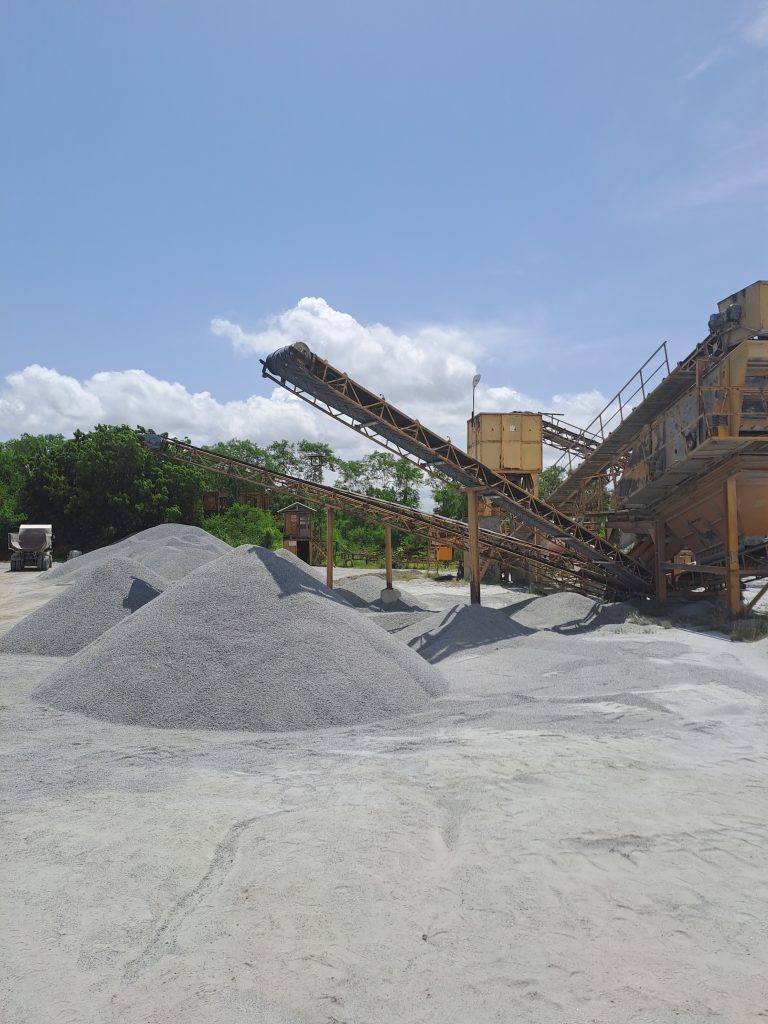Exploring the Wonders of Quarry Dust in Construction: Unleashing its Versatility and Strength
In the realm of construction materials, one often-overlooked hero is quarry dust. This humble byproduct of the quarrying process packs a punch in terms of versatility, durability, and environmental sustainability. Let’s delve into the characteristics and myriad applications of quarry dust that make it an indispensable asset in the construction industry.
Quarry dust, also known as stone dust, rock dust, or stone screenings, is a byproduct obtained during the crushing process of granite rocks in quarries. Primarily composed of finely crushed particles, it is a granular substance with diverse properties.

Versatility in Construction:
- Concrete Production: It is a valuable addition to concrete mixes, acting as a partial replacement for conventional sand. Its angular and rough texture enhances the bond between particles, contributing to improved strength and durability of the concrete. This makes it a sustainable alternative, reducing the need for natural sand and minimizing environmental
impact. - Road Construction: In road construction, quarry dust finds application as a sub-base material. Its compaction properties make it ideal for providing a stable foundation, especially in areas with poor soil conditions.
The angular nature of the dust particles interlocks, creating a robust layer that withstands heavy loads. - Building Blocks and Bricks: The use of quarry dust in the production of bricks and building blocks is gaining popularity. Its fine texture allows for precise molding, and the enhanced bonding characteristics contribute to the structural integrity of the final product.
- Stabilization of Soil: Unstable or expansive soils can be effectively stabilized using quarry dust. When mixed with soil, it improves the soil’s geotechnical properties, reducing its susceptibility to erosion and enhancing load-bearing capacity.
IMPORTANCE OF OUR QUARRY DUST
- Cost-Effective: It is often more economical than traditional construction materials. Its availability as a byproduct makes it a cost-effective choice for various applications.
- Environmental Sustainability: Utilizing quarry dust reduces the demand for natural resources, promoting sustainability in construction. By repurposing a byproduct, we contribute to the circular economy and minimize waste.
- Improved Workability: In concrete mixes, it enhances workability, making it easier to handle and mold. Contractors appreciate its fluidity and ease of placement.
- Strength and Durability: The angular shape of it particles enhances the interlocking effect, resulting in concrete and structures with improved compressive strength and durability.
- Challenges and Mitigations: While it brings a plethora of benefits, its use comes with certain challenges. These include potential issues related to dust during handling and transportation. Dust control measures, such as wetting the material or using it in stabilized forms, can effectively mitigate these challenges.
In the ever-evolving landscape of construction materials, it stands out as a versatile and sustainable solution. Its applications span from enhancing the strength of concrete to stabilizing soil and creating durable building blocks. As we embrace eco-friendly construction practices, the role of quarry dust in sustainable development becomes increasingly significant.
Remember, it’s not just dust; it’s the cornerstone of innovation in modern construction.
